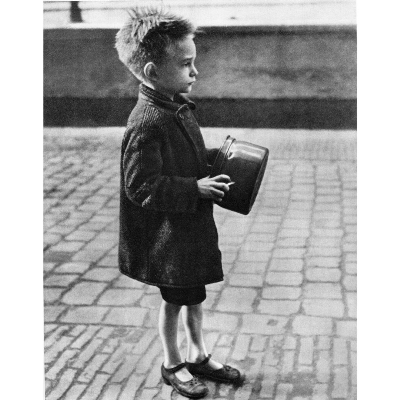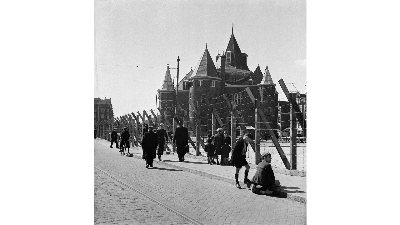
©
Більше восьми тисяч фотографій, зроблених нелегально під час нацистської окупації Нідерландів, були офіційно визнані частиною національного реєстру програми «Пам’ять світу» ЮНЕСКО. Йдеться про архів під назвою «Підпільна камера», створений амстердамськими фотографами, які документували життя в окупації та спротив нацистам. Ця рідкісна візуальна хроніка охоплює період 1940–1945 років і містить сцени, що зазвичай не потрапляли до об’єктивів через загрозу життю: транспортування зброї, акти саботажу, діяльність підпілля, підробка документів і випуск нелегальної преси. Багато світлин також фіксують страждання мирного населення під час "голодної зими" 1944–1945 років. Фотографії знімали таємно, нерідко — з-під поли пальта чи з велосипедної сумки. «Зйомка у ті часи могла коштувати життя. Камери використовували непомітні — як-от Rolleiflex, який дозволяє знімати, дивлячись згори, а не спрямовуючи об'єктив на об’єкт», — розповіла кураторка музею Foam Клаарт’є ван Дейк. На базі оновленого дослідження 2 травня там відкриється тематична виставка. Хоча багато світлин були зроблені поспіхом, іноді з перекошеним горизонтом чи недостатньою різкістю, саме вони стали визначальними для візуального сприйняття Другої світової війни в Нідерландах. Зокрема, фотографиня Еммі Андріссе зафіксувала виснаженого хлопчика з каструлею на шляху до польової кухні, а Кас Оортгейс — мешканців Амстердама, що повертались із сільської місцевості після пошуків їжі. 7 травня 1945 року декілька фотографів стали свідками кривавої трагедії на площі Дам, коли німецькі солдати відкрили вогонь по цивільних. Нині архів «Підпільної камери» визнається не лише цінним історичним джерелом, а й потужним нагадуванням про силу документального фото у темні часи.
Dutch Resistance Photo Archive Awarded UNESCO Heritage Status
More than 8,000 photographs taken illegally during the Nazi occupation of the Netherlands have been granted UNESCO heritage status as part of the organisation’s “Memory of the World” programme. The archive, known as The Hidden Camera (Ondergedoken Camera), was compiled by a group of Amsterdam-based photographers who risked their lives to document daily life under occupation and the acts of resistance against the Nazi regime. The rare visual chronicle covers the period from 1940 to 1945 and captures moments that were seldom photographed due to the danger involved: weapons smuggling, sabotage operations, underground resistance, forged identity documents and the production of illegal newspapers. Many images also depict the suffering of civilians during the devastating "Hunger Winter" of 1944–1945. The photos were often taken in secret — from beneath a coat or hidden inside a bicycle bag. “Taking a photograph could be a death sentence,” said Claartje van Dijk, curator at Amsterdam’s FOAM photography museum, which will open a new exhibition on 2 May based on fresh research into the collection. “The photographers often used Rolleiflex cameras, which allowed them to shoot discreetly from waist level rather than holding the camera to their face.” Although many of the images are slightly skewed or blurred due to the hurried conditions under which they were taken, they have become central to how the war is visually remembered in the Netherlands. Among the most iconic are Emmy Andriesse’s image of a malnourished boy carrying a small pot to a soup kitchen, and Cas Oorthuys’ photographs of Amsterdam residents returning from the countryside with food supplies. On 7 May 1945, several photographers were present at Dam Square when German soldiers opened fire on a civilian crowd, resulting in a massacre. Today, The Hidden Camera archive is recognised not only as a vital historical record, but also as a powerful testament to the enduring impact of documentary photography in times of darkness.

©
1136